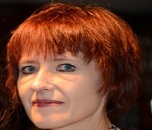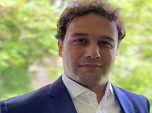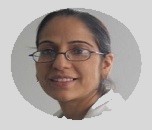Theme:
Renowned Speakers
World Dermatology 2022
Conference Series LLC Ltd welcomes all the speakers and delegates from around the world to join "23rd World Dermatology Congress” during June 20-21, 2022 in Paris, France with the theme “Safety Analysis of biological and novel treatment for Dermatology”.
World Dermatology 2022 is an exceptional occasion intended for experts to encourage the use of dermatological methods in studying large disease burden and highlighting existing opportunities in the field of Dermatology. This international and interdisciplinary conference will act as a center for dermatologists, clinicians, business professionals, foundation leaders, researchers, academicians and others to discuss and exchange on recent dermatological concepts and brings together professionals from every generation who share a commitment to reduce the global burden regarding Dermatology.
About Organization
Conference Series LLC Ltd is the world's leading specialist in organizing academic, scientific and business conferences, meetings, symposia and exhibitions in different vertical and horizontal sectors such as medicine, pharmacy, engineering, science, technology and business to promote scientific research. Each year, we organize over 3,000 global events, including more than 1,000 conferences, more than 1,000 symposia, more than 1,000 workshops in the United States, Europe, the Middle East and Asia, with the generous support and cooperation of our 30,000 editorial board members and over 1,000 scientific societies. All conference proceedings are published in special issues of our 700+ international open access journals with the DOI provided by CROSSREF.
Benefits of Attending
With individuals from around the globe concentrated on finding out about Dermatology this is your single best chance to achieve the biggest gathering of members. Exchange ideas and network with leading dermatology professionals, dermatologists, cosmetologists, clinicians, business analysts and researchers from more than 40 countries. Lead presentations, communicate data, meet current and potential customers, sprinkle another product offering, and earn name recognition on this two-day opportunity.
Target Audience
- Dermatologists
- Cosmetologists
- Doctors
- Professors
- Associate professors
- Business Analysts
- Foundation Leaders
- Researchers
- Students
Track 01: Dermatology
Dermatology is the branch of medicine that deals with the skin, hair, nails and related diseases. Skin is the largest organ in the body that covers the entire body. As the protected outer covering of the body, it is presented to nature, making it weak against blemishes, rashes, re-staining, bruising, bubbling, injuries, illnesses and peculiar problems. It behaves like a guarded shield against heat, light, damage and soiling. It directs the body temperature, stores water and fat, it is an unmistakable organ, Prevents water difficulties, Prevents the area of ​​infinitesimal life forms, behaves as an obstacle between the animal and its environment. The dermatologist treats problems related to the skin, hair and nails. Regular skin lesions and congestion are markers of internal disease and reflect the procedures that take place inside the body.
Track 02: Cosmetic Dermatology
Cosmetic dermatology is a specialized area of ​​dermatology that focuses on improving the skin of the face and neck for cosmetic purposes rather than treating a medical problem. Botox, skin peels, laser hair removal and dermal fillers are the some of the examples of cosmetic dermatological procedures. In order to enhance the appearance of skin pigmentation, wrinkles, moles, premature aging, fine line and scars; a cosmetic dermatological procedure can be utilized.
Track 03: Clinical Dermatology
Clinical dermatology is the part of restorative science that deals with the collection of conditions and conditions of the skin, hair and nails. The skin helps security against light radiation, destructive synthetic compounds and poisons and various diseases and additionally maintains the protection of the veins and sweat organs which control temperature. However, the importance of healthy skin is as often as possible overlooked from the perspective of the consistent and harmless nature of most skin conditions. Healthy hair and strong nails are also considered among our coveted strengths.
Track 04: Pigmentation
Pigmentation involves shading. Skin pigmentation issues influence your skin tone. The skin gets its shade from a color called melanin. Extraordinary skin cells make melanin. As these cells end up being clearly damaged or unwanted, this influences the generation of melanin. Some pigmentation problems only influence the patches of the skin. Others influence your whole body. The body produces too much melanin, the skin darkens. Vitiligo is a condition that causes patches of fair skin. Albinism is an inherited disease that affects the skin of a man. A man with albinism may have no shading, lighter skin shade than regular skin shade, or roughly missing skin shade. Illnesses, resentments, and burns can also make the skin lighter.
Track 05: Pediatric Dermatology
Pediatric dermatology, a subspecialty of dermatology, represents a considerable authority in the discovery and treatment of skin conditions in newborns, youth and adolescents. Pediatric dermatologists are concerned about skin issues including pigmentations, skin disease, dermatitis, etc. Aggravations and abnormal skin conditions can directly influence children. Atopic eczema, also called dermatitis, is a skin condition commonly found in young children. Atopic dermatitis includes a range of skin conditions with side effects, including red, annoying, overflowing, scaly skin. Atopic eczema in babies, otherwise called infantile dermatitis, is usually found on the face and scalp, causing tingling and swelling of the skin.
Track 06: Derma-Pathology
Derma-Pathology is the solid object of Dermatology and Pathology which focuses on the examination of skin stains at one time and at the subatomic level. It's like a way to wrap up the reviews of the potential reasons behind the skin blemishes at a focal level. Dermatopathologists work in a comfortable relationship with clinical dermatologists. The procedure uncovers the histology of the disease and results in unequivocal special knowledge. There are skin problems, including “rash” discharge and neoplasms or dermatologic oncology oversees pre-infections, for example, actinic keratosis and tumors, including soft masses, and dangerous developments for example, basal cell carcinoma, squamous cell carcinoma, and the most dangerously perilous melanoma.
Track 07: Hair Transplantation
Hair Transplantation is a procedure in which the hair is moved to a bald area of the head. The procedure is performed by plastic or dermatological surgeon. Usually, in this procedure the hair is moved from the back or side of the head to the front or top of the head. For the majority of hair loss, pattern baldness is responsible and it comes down to genetics. Stress, hormonal imbalance, medications, diet etc. are some of the remaining cases due to which hair loss may occur. Slit grafts and micro-grafts are the two types of transplant procedures. Depending on the amount of coverage needed, slit graft contain 4 to 10 hairs per graft whereas micro-graft contain 1 to 2 hairs per graft.
Track 08: Immunodermatology
Immunodermatology focuses on diagnosis as well as treatment of skin disorders characterized by defective responses of the body's immune system. Several areas have special attention, such as photo-immunology, inflammatory diseases such as allergic contact dermatitis and atopic eczema, presumably autoimmune skin diseases such as vitiligo and psoriasis.
Track 09: Plastic Surgery and Reconstructive Surgery
Plastic, therapeutic and reconstructive medical procedures are a set of medical procedures performed recalling the real target to repair or restore parts of the body to look standard or to improve a part of the body to make it better. These kinds of medical procedures are surprisingly peculiar. They are complemented by precise cutting of the patient's skin and tissue and by suturing philosophies. Continued advancements in the difference between scaled-down instruments, new materials for counterfeit appendages and body parts, and improved neat structures have increased the degree of shopping of plastic medical procedures that can be performed. The plastic medical procedure is performed frequently to treat leaks at birth and to kill redditions of the skin such as warts, skin scars, or pigmentations. Therapeutic medical procedure strategies are implemented to make the patient younger or to decorate his appearance. Reconstructive medical procedure is used to reattach isolated body parts during battles or disasters, upper contour skin joins after excessive consumption, or to duplicate patient body parts that were missing mid-labor or erased by a medical procedure.
Track 10: Skin Infections and Skin Cancer
Skin cancer is the abnormal growth of the skin cells. Basal cell carcinoma, squamous cell carcinoma and melanoma are the three major types of skin cancer. Including on the scalp, lips, face, neck, chest, ears, hands, legs and arms, skin cancer develops primarily on areas of sun-exposed skin. Apart from this, it may also develop on palms, toenails etc. Including people with darker complexions, skin cancer affects people of all skin tones. Skin infections can be caused by a wide variety of germs. Bacterial skin infections, viral skin infections, fungal skin infections and parasitic skin infection are the fur types of skin infections. Redness of the skin and a rash are the common symptoms of skin infections. Apart from this, itching, tenderness and pain are also the symptoms of skin infections.
Track 11: Aesthetic Surgical Procedures
Feel is a comprehensive term for forces that focus on improving the appearance of people through corrective strategies. It's not quite recently limited to scars, wrinkles, moles, top fat, unwanted hair, and skin spots. Elegant methodology usually included reconstructive surgery, reconstructive surgery, and dermatology. Elegant surgical methods included in pharmaceuticals: liposuction facelifts, breast inserts, x-ray recurrence removal, and nonsurgical strategies: radio-recurrence skin fixation, nonsurgical liposuction, substance peeling. Pairs of specialists use a mixture of the two methodologies.
Track 12: Hyperpigmentation and Vitiligo
Expanded melanin causes hyperpigmentation that obscures an area of ​​the skin or nails. It is caused by sun damage, including those identified with vulgar skin inflammation. Individuals with darker skin tones are more prone to hyperpigmentation, especially with the introduction of excess sun. The treatment of hyperpigmentation caused by an overproduction of melanin includes the use of topical depigmenting operators. Again, vitiligo is described by patches of skin that lose their color and eventually turn white with sharp edges. The spots frequently start on areas of the skin that are exposed to the sun and are more noticeable in people with dull skin.
Track 13: Rejuvenation and Resurfacing
Skin abnormalities are due to skin problems, sun, ripening, and even heredity on the face and elsewhere on the body. These incorporate texture irregularities such as lines, wrinkles, inflamed scars on the skin, pigmentation changes such as spots and sun spots, or obvious veins. The skin turns out to be less firm and certain areas of the body can create cellulite conditions, or may appear less firm. Specialists use distinctive techniques, for example, laser skin resurfacing, advances in skin re-emergence and facial revitalization, permanent cosmetics and their tangles, ablative and non-ablative lasers, microdermabrasion treatments.
Track 14: Anti-ageing Therapy
Aging is a characteristic procedure where our cells get worse over time. Anyway, nowadays, maturation takes the lead due to our way of life: pressure, food handled, contamination, and long hours of work and lack of physical exercise. Either way, pharmaceutical researchers and cosmetologists are thinking about new elements and systems to rejuvenate and delay this maturation process.
Track 15: Diet in Dermatology
Diet has an impact on the skin under certain conditions, but it is not always necessary to change your diet to improve a certain symptom or disease. Among the biggest misconceptions related to diet and dermatology, there is too much emphasis on the role of food allergies in skin conditions. Although some food allergies can affect the skin, they play a limited role in all skin diseases. A dermatologist can help patients with acne and rosacea determine if a food in their diet might make it worse. Current dietary science tries to bridge the gap between diet and ideal skin condition.
Track 16: Dermatological Diseases
Dermatology is both a medicinal and a conservative branch that deals with hair, nails, skin and their diseases. The duty of a dermatologist is to treat infections and certain corrective skin problems. One of the most widely recognized long-term skin conditions is skin inflammation, which manifests as areas of clogged pores, whiteheads, pimples, oily skin and possibly scarring. Different diseases include skin growth and epithelial cell threat, contact dermatitis, Kawasaki disorder, irritation, viral skin diseases, scars and rashes.
Track 17: Dermatological Techniques
A wide variety of dermatological systems are used to analyze and treat dermatological infections. Some common dermatological systems used to test for infections are biopsies, including punch, shave, and extract biopsy.
Track 18: Current Research in Dermatology
Productive class medical procedures like liposuction, labiaplasty, and breast development have changed over time. The focus of the research should be to develop a new level of understanding in this very important area of ​​health sciences, which will allow us to utilize the most recent findings on the manifestations and causes of dermatological diseases and cosmetics. In recent times, medical research has reached new heights that involve fundamental scientific analysis, clinical research, new strategies for diagnosing disease and providing treatment.
In 2018, the global dermatological market was worth $ 15,563 million and by 2026; it is expected to reach $ 36,205 million. The major factor contributing to the growth of the dermatological market includes increasing demand for topical dermatological drugs such as anti-inflammatory, anti-infective, local anesthetics, cleansers and emollients to treat acne. In addition, the growing awareness of skin diseases, high demand for rapid diagnosis, and increasing incidence of skin cancer and other skin disorders are the factors that are driving the growth of the dermatology market. However, the lack of drug awareness and strict government regulations are holding back the growth of the dermatology market. The development of innovative products and the increase in the number of mergers and acquisitions by key vendors are expected to provide ample opportunities for the market growth during the forecast period.
The global dermatology devices market is segmented into North America, Europe, Asia, and Rest of the World based on the region among which the market is dominated by North America, followed by Europe, Asia and the Rest of the World. However, Asia is expected to experience the highest CAGR during the forecast period with the growth of this market centered on Japan, China, and India. The growth in the Asian region is mainly due to the increasing incidence of skin diseases, increased healthcare expenditure and increased awareness of cosmetic procedures.
Major Dermatology Associations around the World:
- Dermatological Society of Singapore
- American Academy of Dermatology (AAD)
- Cosmo care Dermatology PRP Therapy & STD Clinic Dubai
- European Society for Dermatological Research (ESDR)
- Asian Dermatological Association Ltd
- Australasian Society for Dermatology Research
- National Institute of Health (NIH)
- American Academy of Cosmetic Family Medicine
- American Society of Cosmetic Dermatology & Aesthetic Surgery
- American Society for Dermatological Surgery (ASDS)
- American Board of Dermatology
- American Osteopathic College of Dermatology
- American Society for Aesthetic Plastic Surgery (ASAPS)
- International Society of Dermatology (ISD)
- National Society of Cosmetic Physicians/American Academy of Cosmetic Physicians
- British Society of Anti-Ageing Medicine
- British Society for Dermatological Surgery
- Canadian Dermatology Foundation
- Dermatological Society of Malaysia
- Japanese Dermatological Association
- National Dermatology Association
- British Cosmetic Dermatology Group
- European Academy of Dermatology and Venereology (EADV)
- Indian Association of Dermatologists, Venereologists and Leprologists
Conference Highlights
- Dermatology
- Cosmetic Dermatology
- Clinical Dermatology
- Pigmentation
- Pediatric Dermatology
- Derma-Pathology
- Hair Transplantation
- Immunodermatology
- Plastic Surgery and Reconstructive Surgery
- Skin Infections and Skin Cancer
- Aesthetic Surgical Procedures
- Hyperpigmentation and Vitiligo
- Rejuvenation and Resurfacing
- Anti-ageing Therapy
- Diet in Dermatology
- Dermatological Diseases
- Dermatological Techniques
- Current Research in Dermatology
To share your views and research, please click here to register for the Conference.
To Collaborate Scientific Professionals around the World
| Conference Date | June 20-21, 2022 | ||
| Sponsors & Exhibitors |
|
||
| Speaker Opportunity Closed | Day 1 | ||
| Poster Opportunity Closed | Click Here to View | ||
Useful Links
Special Issues
All accepted abstracts will be published in respective Our International Journals.
- Journal of Dermatology and Dermatologic Diseases
- Journal of Dermatology Research and Skin Care
- Research in Clinical Dermatology
Abstracts will be provided with Digital Object Identifier by









